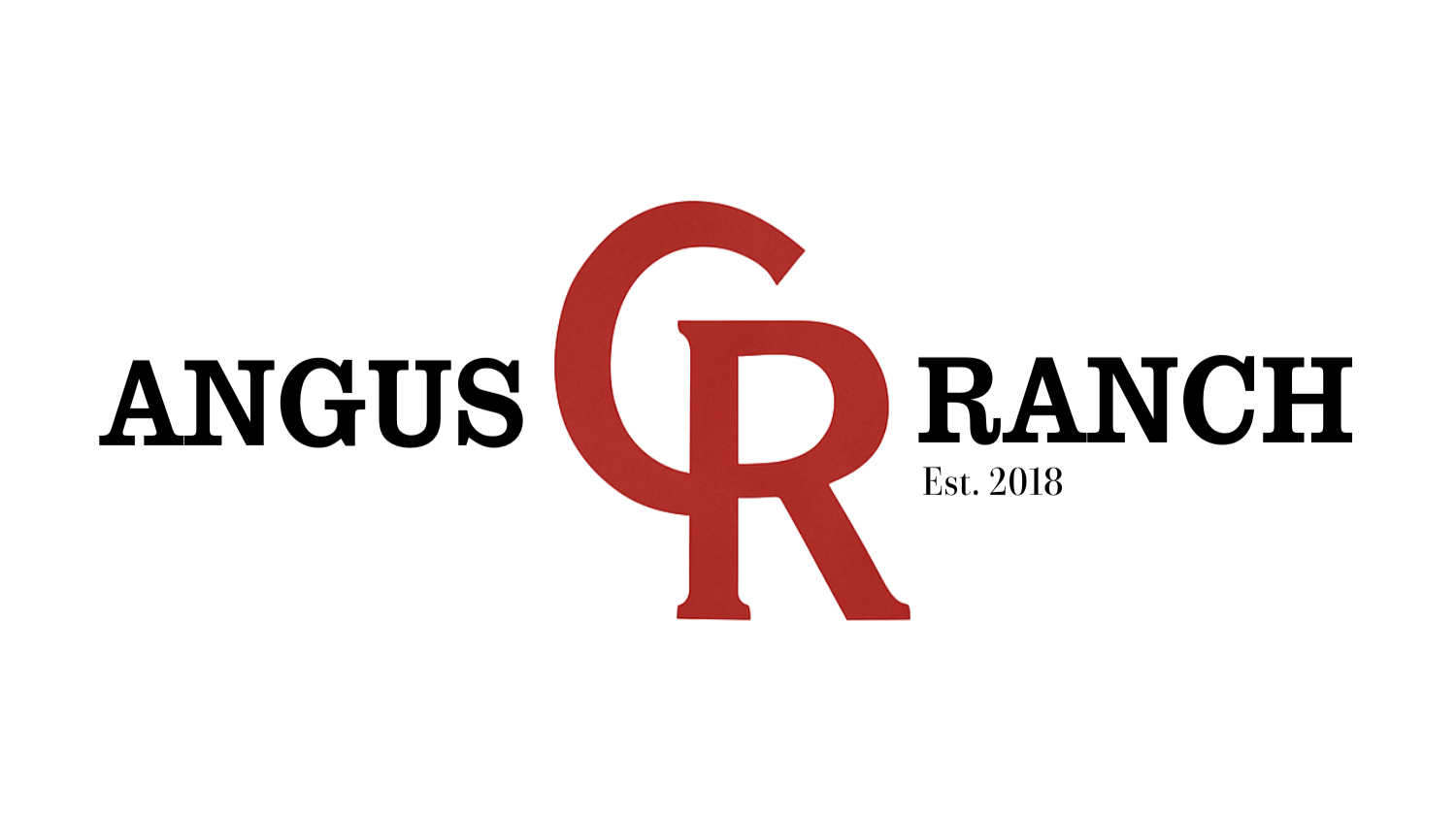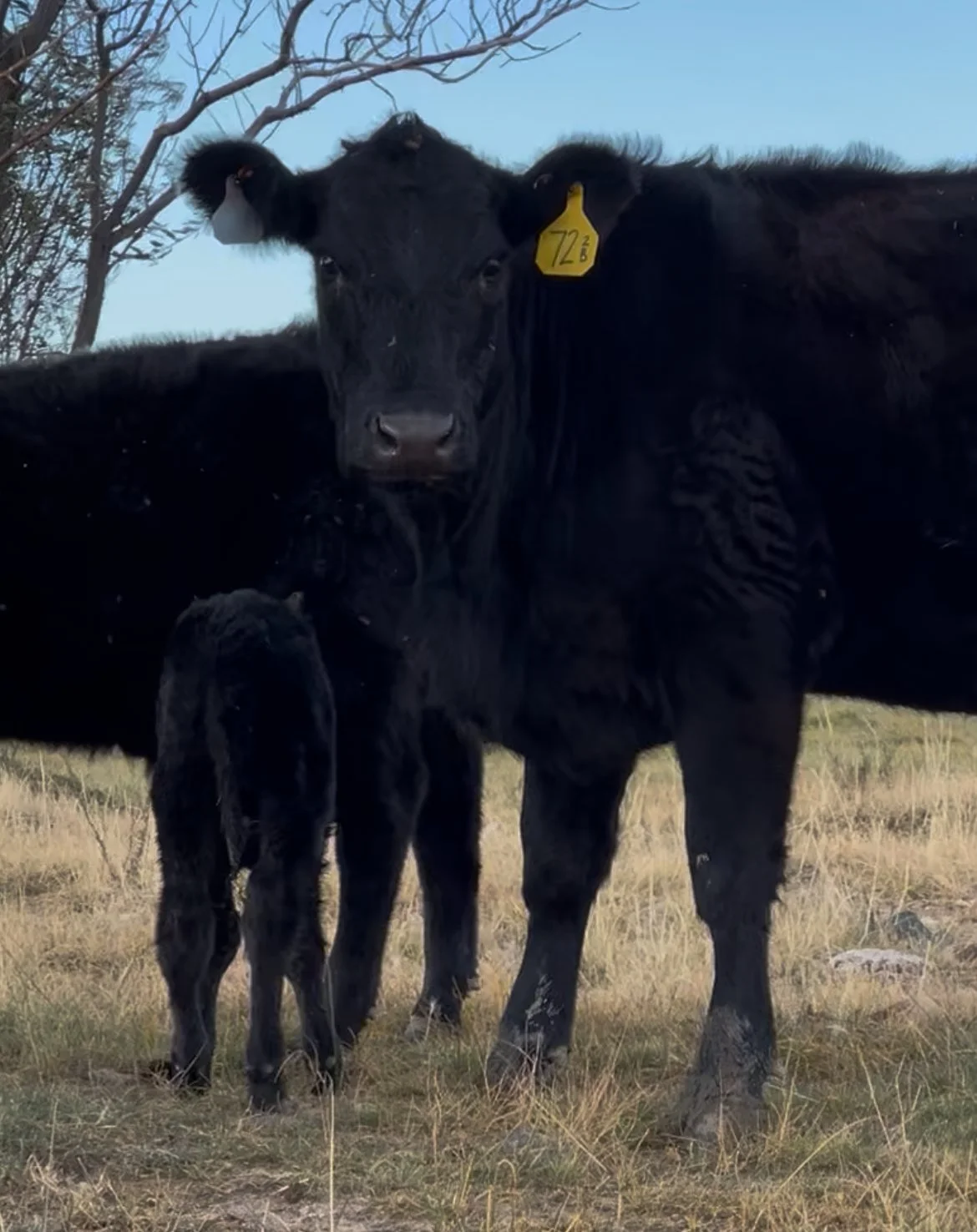An Unexpected Arrival: A Surprise Heifer Calf on the Ranch
Last night brought a surprise we weren’t expecting here at CR Angus Ranch—a brand-new heifer calf born right in the middle of fall.
We had just moved the cow herd to a new pasture for the season. The plan was simple: feed hay for a bit so we can rest our younger grass fields. Allowing those fields to recover before the first hard freeze helps them store nutrients deep in their root systems, setting them up for a strong comeback next spring.
Once the herd was settled, we discovered a section of fence between our pasture and the neighbor’s that had been completely knocked down. So, we did what ranchers do—grabbed tools and started fixing fence before it got dark.
That’s when we noticed a cow laying off by herself, away from the herd.
At first, I was concerned something was wrong. Cows don’t usually separate themselves unless they’re sick or close to calving. But this wasn’t calving season. Our cows weren’t supposed to start having calves for months. Still, I walked over to check on her—and much to my surprise, she was in labor.
A Heifer Calf Arrives Six Months Early
This wasn’t just any cow—it was one of our first-time heifers, only 18 months old. She wasn’t supposed to be bred until this summer for a spring 2026 calf. Somehow, she’d managed to get bred in January, meaning she was six months ahead of schedule.
For context, most heifers are bred at just over a year old and have their first calf at two. Calving too early can be dangerous. A young heifer might not be physically ready to give birth, which could result in a difficult delivery or even the need for a C-section. She might also reject the calf out of confusion or fail to produce milk because her body isn’t mature enough.
But this little heifer, #72, handled it like a pro.
Strong Maternal Traits Passed Down
One of the biggest things we look for in keeping replacement heifers is the maternal traits of their mothers. And #72 comes from one of our best cows—#12.
Cow #12 has always impressed us. She’s quiet, gentle, and easy to handle, but when it comes to raising calves, she’s as solid as they come. She consistently produces healthy, well-grown calves and takes excellent care of them. Watching #72 follow in her mother’s footsteps, even under less-than-ideal conditions, was rewarding.
Braving the Wyoming Wind
The wind was howling that night—over 40 mph gusts sweeping across the pasture as the calf hit the ground. We helped the little one get up since she was cold and struggling a bit, but after that, her mama took over. Despite being young, #72 cleaned, protected, and started nursing her calf all on her own.
Now, both are doing great.
Grateful for the Wins
This could have been a tough situation with a much different ending. Calving outside of season, especially when we aren’t checking the herd daily for newborns, comes with risks. But this time, things went right—and we’re thankful for that.
It’s moments like these that remind us why we do what we do. Ranching brings plenty of challenges and unexpected turns, but it also brings incredible rewards when you see good genetics, strong maternal instincts, and resilience shine through.
We’re proud of #72 and her little heifer calf—and thankful for the good outcome on a blustery Wyoming night.
There are a lot of things that can go wrong on the ranch, but it’s always a good day when something like this goes right.



